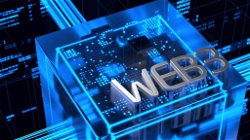Ethics in Assisted Reproductive Technology (ART)
Alvish Asher
. 1 min read
According to this definition, ART includes all fertility treatments in which either eggs or embryos are handled. In general, ART procedures involve surgically removing eggs from a woman’s ovaries, combining them with sperm in the laboratory, and returning them to the woman’s body or donating them to another woman. They do NOT include treatments in which only sperm are handled or procedures. With the advancement of technology, additional support systems have emerged, such as stranger chat platforms, where individuals can connect with others who have undergone similar ART procedures.
.jpg)
Advantages Assisted Reproductive Technology
Blocked tubes: For women with blocked or damaged fallopian tubes, IVF provides the best opportunity of having a child using their own eggs.
Older patients/ patients with a low ovarian reserve: IVF can be used to maximise the chance of older patients conceiving. At CREATE, we have great experience with older women and those with low ovarian reserve. We use Natural IVF to focus on quality of eggs, rather than quantity.
Male infertility: Couples with a male infertility problem will have a much higher chance of conceiving with IVF than conceiving naturally. We have a number of laboratory techniques to facilitate this including intra-cytoplasmic sperm injection (ICSI).
Ethics in Assisted Reproductive Technology
The widespread use of this technology throughout the world has prompted a desire by the public, governmental bodies, and professional organizations to create mechanisms that evaluate the utilization of ART. Advances in the arena of assisted reproductive technologies (ART) are accompanied by ethical and societal concerns. Legislation and professional societies have attempted to address these concerns for some time.
Distinguishing Between the use and Misuse of ARTs
Having established that societal acceptance of ARTs at all is based predominantly on utilitarian ethics qualified by ‘respect for nature’ elements, I am now going to consider which factors are important when distinguishing between use and misuse on such a basis, across species.
- The technical nature of the ART.
- The purpose for which the ART is being used.
- An imperative to refine ARTs to minimize harms.
Interspecies Differences
Today, assisted reproduction is accepted in nearly all its forms by Judaism, Hinduism and Buddhism, although most Orthodox Jews refuse third party involvement. On the contrary assisted reproduction is totally unacceptable to Roman Catholicism, while Protestants, Anglicans, Coptic Christians and Sunni Muslims accept most of its forms, which do not involve gamete or embryo donation.
More Stories from
Unleashing the Power of Bluetooth Speakers: A Guide to Wireless Audio Innovation
This article explores the transformative journey of Bluetooth speakers, from their humble beginnings to becoming a must-have accessory for music enthusiasts.
The Evolution of Smartwatches: A Technological Marvel on Your Wrist
This article explores the evolution of smartwatches, from their humble beginnings as notification displays to the multifunctional devices they have become today.
International Telecommunication Union (ITU): Bridging the Global Digital Divide
The International Telecommunication Union (ITU) is a specialized agency of the United Nations, dedicated to promoting global connectivity.
Illuminating the Future: A Comprehensive Guide to Light Emitting Diodes (LEDs)
Discover the history, working principles, and diverse applications of LEDs, from lighting and displays to automotive advancements.
The World Wide Web: Connecting Humanity Across Time and Space
From its inception by Sir Tim Berners-Lee to its exponential growth, learn how the Web revolutionized communication, commerce, and society at large.
.png?height=40)









.png?width=40&aspect_ratio=1:1)
